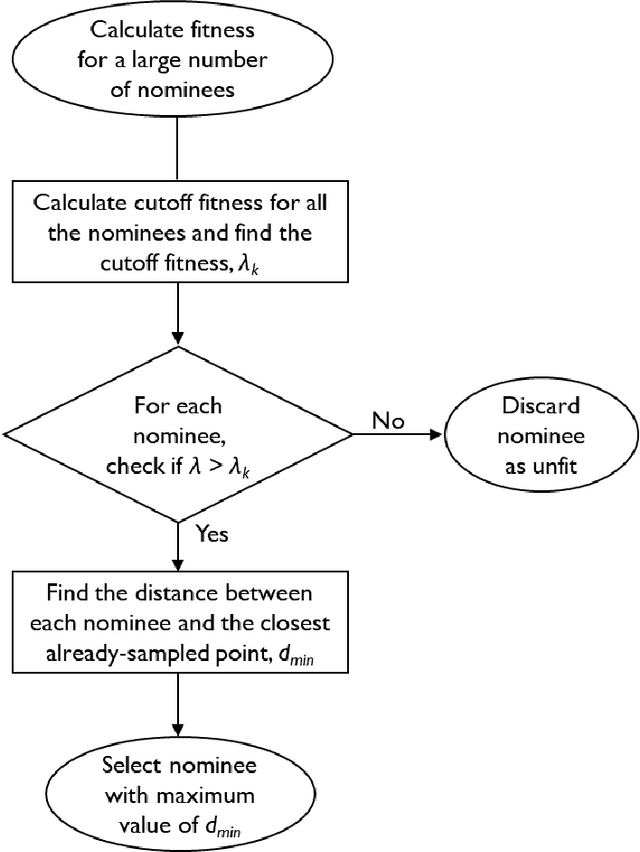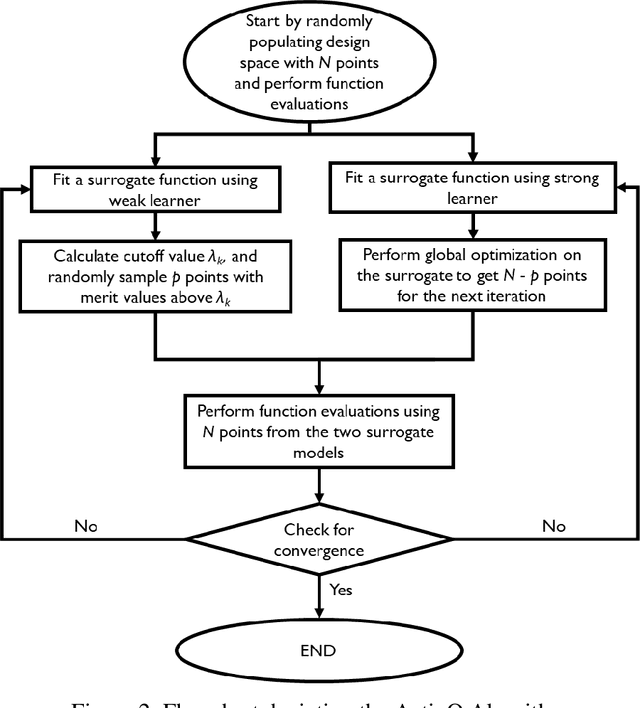A novel machine learning-based optimization algorithm (ActivO) for accelerating simulation-driven engine design
Paper and Code
Jan 04, 2021



A novel design optimization approach (ActivO) that employs an ensemble of machine learning algorithms is presented. The proposed approach is a surrogate-based scheme, where the predictions of a weak leaner and a strong learner are utilized within an active learning loop. The weak learner is used to identify promising regions within the design space to explore, while the strong learner is used to determine the exact location of the optimum within promising regions. For each design iteration, exploration is done by randomly selecting evaluation points within regions where the weak learner-predicted fitness is high. The global optimum obtained by using the strong learner as a surrogate is also evaluated to enable rapid convergence once the most promising region has been identified. First, the performance of ActivO was compared against five other optimizers on a cosine mixture function with 25 local optima and one global optimum. In the second problem, the objective was to minimize indicated specific fuel consumption of a compression-ignition internal combustion (IC) engine while adhering to desired constraints associated with in-cylinder pressure and emissions. Here, the efficacy of the proposed approach is compared to that of a genetic algorithm, which is widely used within the internal combustion engine community for engine optimization, showing that ActivO reduces the number of function evaluations needed to reach the global optimum, and thereby time-to-design by 80%. Furthermore, the optimization of engine design parameters leads to savings of around 1.9% in energy consumption, while maintaining operability and acceptable pollutant emissions.
 Add to Chrome
Add to Chrome Add to Firefox
Add to Firefox Add to Edge
Add to Edge